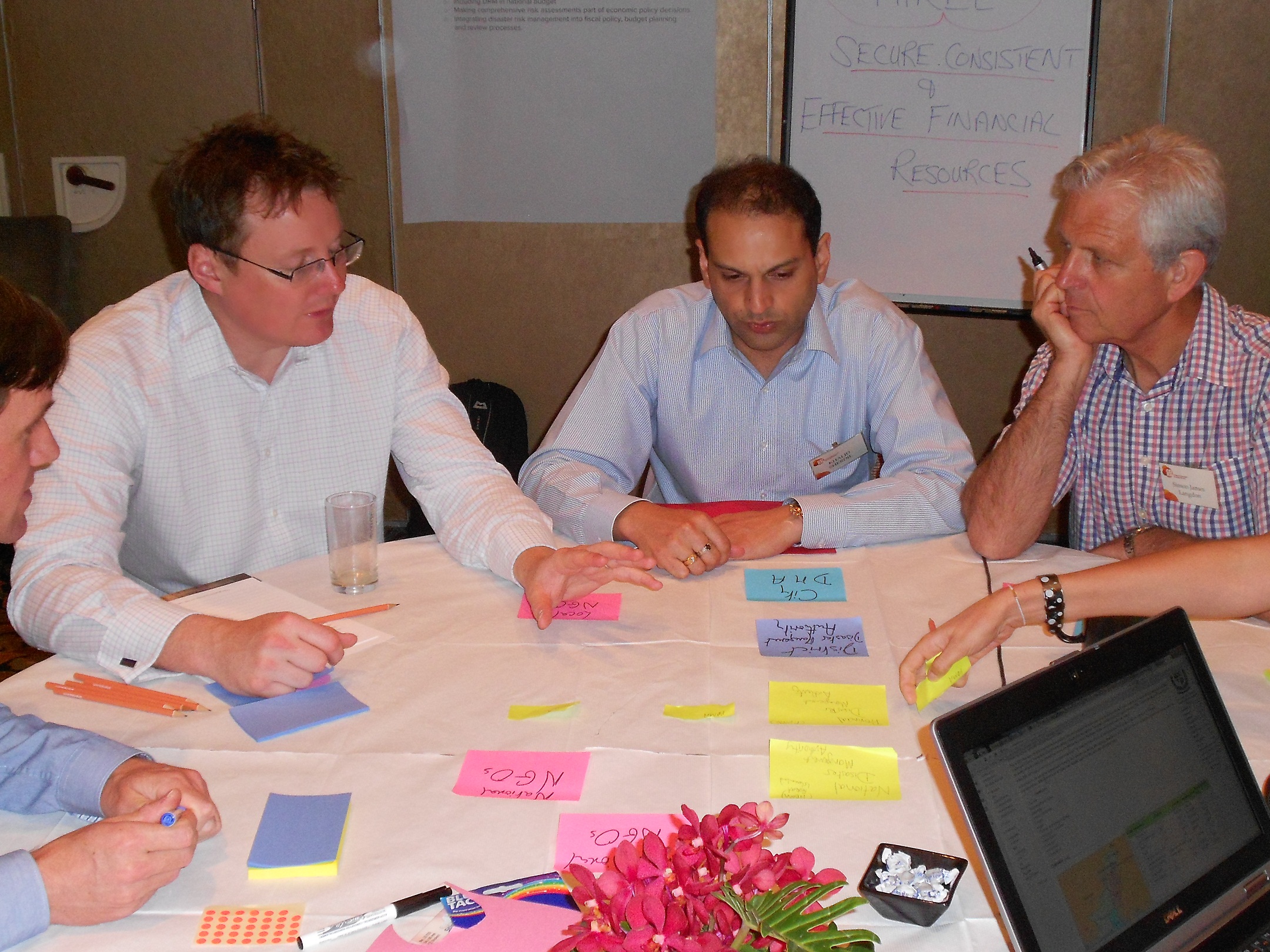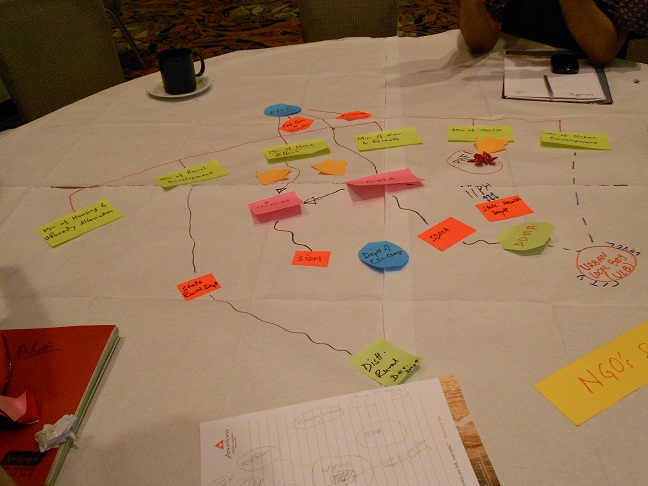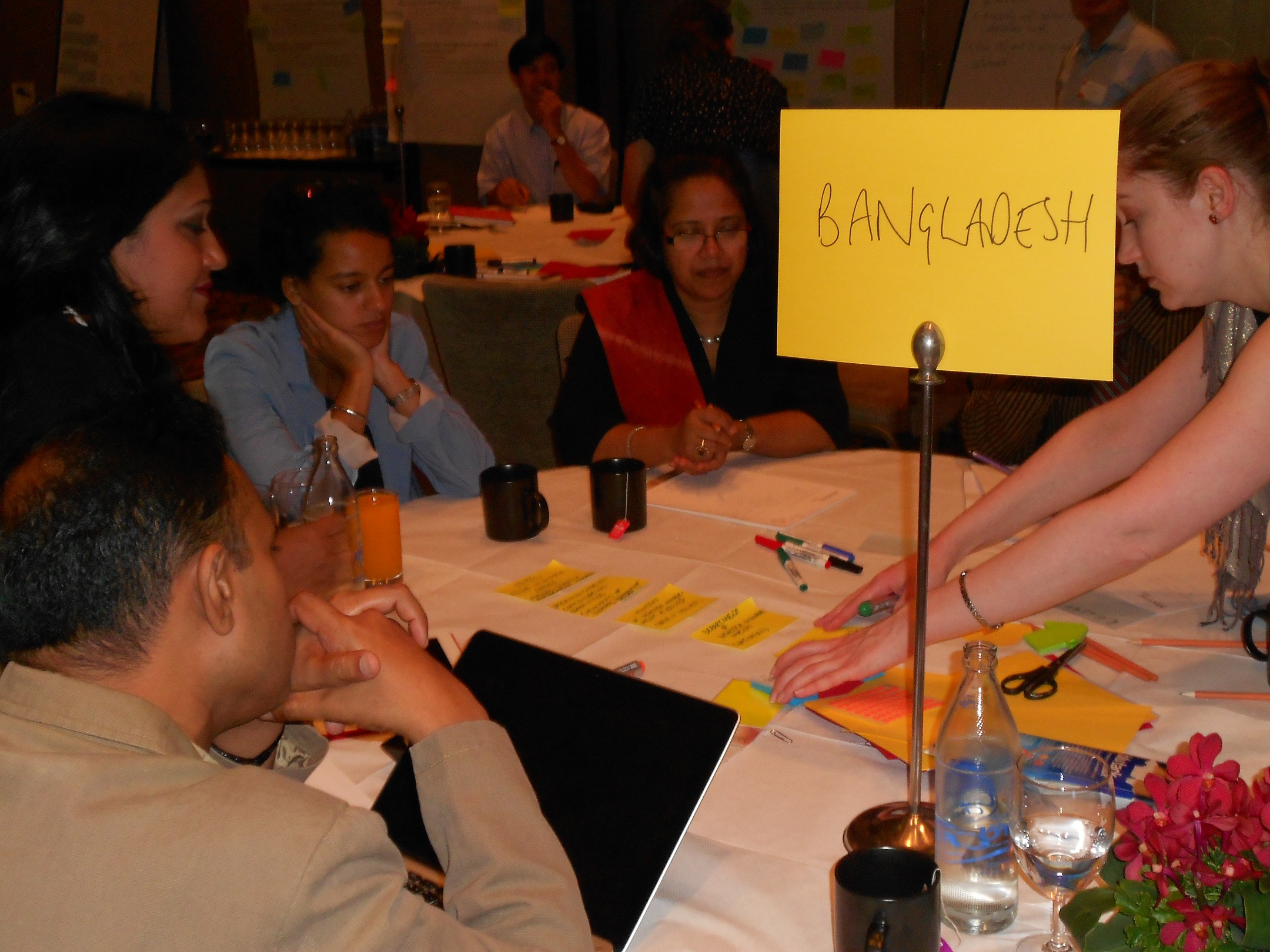Mapping the DRM 'systems' in Asia
Mapping the DRM 'systems' in Asia
In day 1, participants at the CDKN Asia Disaster Risk Management (DRM) learning and innovation hub identified the questions that exist in terms of how to design and deliver effective DRM at the national level.
Day 2 saw them grappling to find the answers.
The group are experts in managing disasters in their respective fields. However, like most practitioners they tend to focus only on the challenges and opportunities in their particular location or sector – whether this is preparing for floods in Eastern India or assessing vulnerability in Central Asia.
The learning hub gave them an opportunity to reflect on the ‘bigger’ picture and how the whole ‘system’ of DRM works in their country.
 The participants were invited to draw the ‘system’ in which their work is happening. They were grouped together by nation (Bangladesh, India, Indonesia, Nepal, Pakistan, Thailand, and Vietnam) and asked to draw and explore the system of stakeholders and relationships that are involved (or should be involved) in climate DRM governance and delivery in their country.
The participants were invited to draw the ‘system’ in which their work is happening. They were grouped together by nation (Bangladesh, India, Indonesia, Nepal, Pakistan, Thailand, and Vietnam) and asked to draw and explore the system of stakeholders and relationships that are involved (or should be involved) in climate DRM governance and delivery in their country.
This generated debate and discussion within the group, as each participant had different experiences and areas of expertise. Another challenge was how to generalise given the size and diversity of each country, for example within even one national ministry some officials may be highly capable and engaged while others lack the capacity to contribute effectively.
 The output were maps – full of post-it notes and scribbles – which illustrated the bottlenecks, challenges, and leverage points they experienced within these national ‘systems’ for DRM. Based on this, the participants decided what needed to change within the current system to improve the situation.
The output were maps – full of post-it notes and scribbles – which illustrated the bottlenecks, challenges, and leverage points they experienced within these national ‘systems’ for DRM. Based on this, the participants decided what needed to change within the current system to improve the situation.
Each country ‘system’ was unique, but there were some common features. In particular, the coordination gap between climate change and DRM agencies is experienced by most countries, and several recommendations centered on bringing these closer together through mergers and joint policy planning mandates. Potential leverage points included policy framing processes at national and sub-national level, financial allocations and incentives, involvement of parliamentarians, and so on.
The India team was so enthused by the system mapping exercise that the group decided to write a joint paper on the system problems they had discussed and the solutions identified and present these to concerned government agencies back home.
Reflecting on the day’s work, CDKN’s DRM Expert, Tom Mitchell, said: “listening to the country conversations I was reminded of the scale of the challenge, the continued mismatch between the institutions we have and the institutions we need to achieve informed and effective DRM. But the ray of light is we have a group of energetic and committed experts and leaders in government, research, and delivery, committed to bringing change and doing things better.”
At the end of the day, these country-specific recommendations were organised around the five themes providing the framework for the event: Risk evaluation, Planning, Finance, Innovation, and Leadership. The next challenge is to decide what the group will do with the lessons learnt.
As CDKN Project Manager Dina Khan explained: "Today’s work will form the basis of CDKN’s ‘call for action’ for national governments. Tomorrow the focus will be on the key investment areas and needs evolving in the realm of climate smart DRM, and the report CDKN is planning from this meeting that gets into the nitty gritty of what it takes to mainstream DRM into development”
